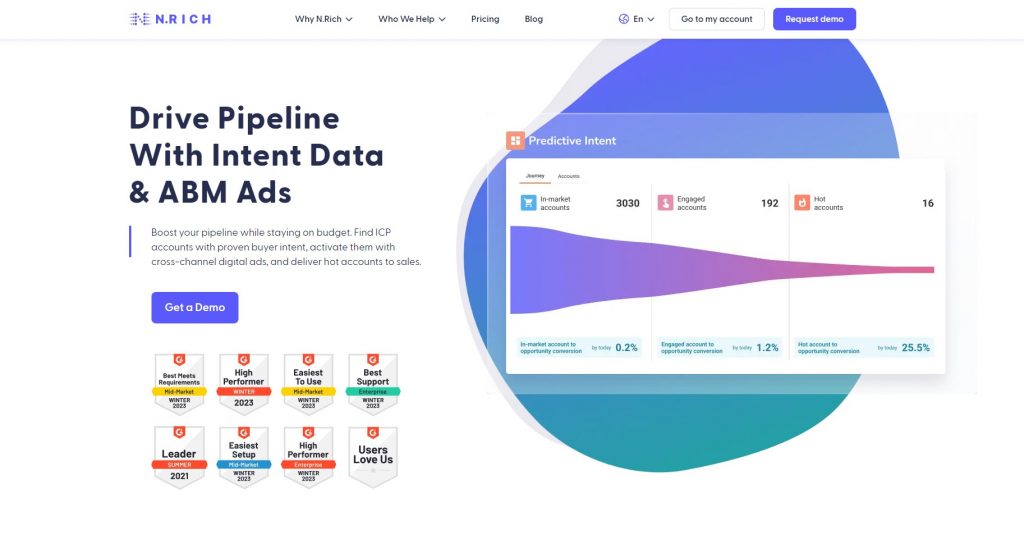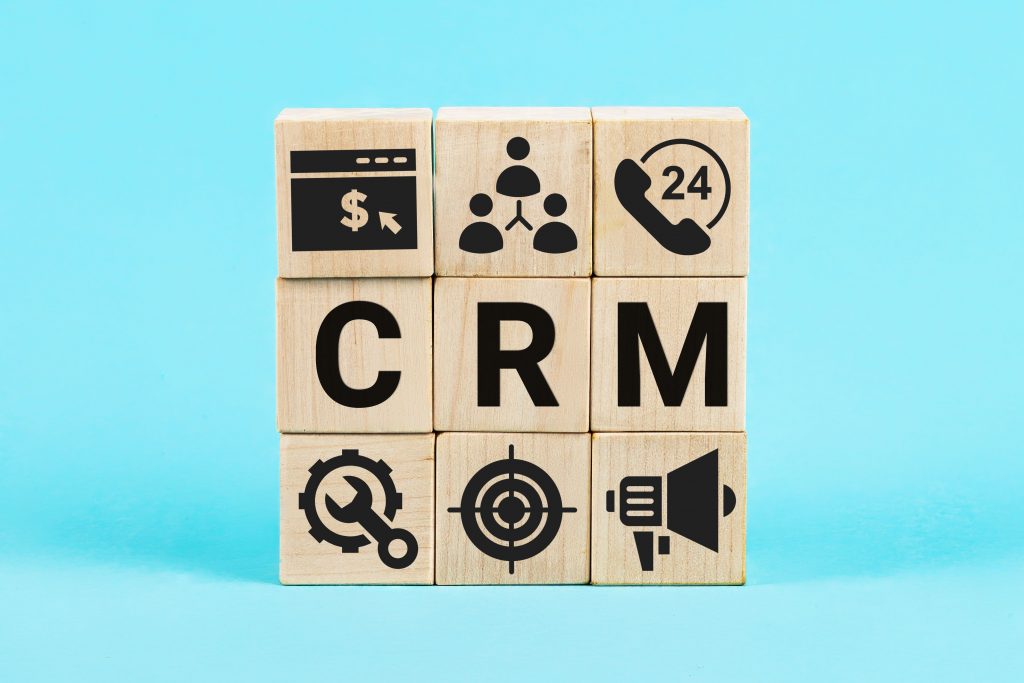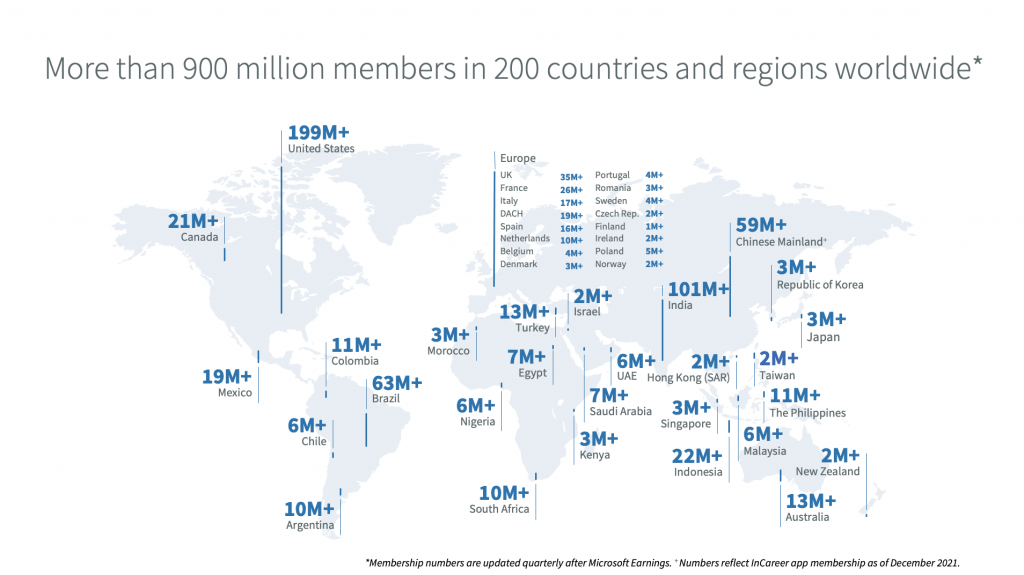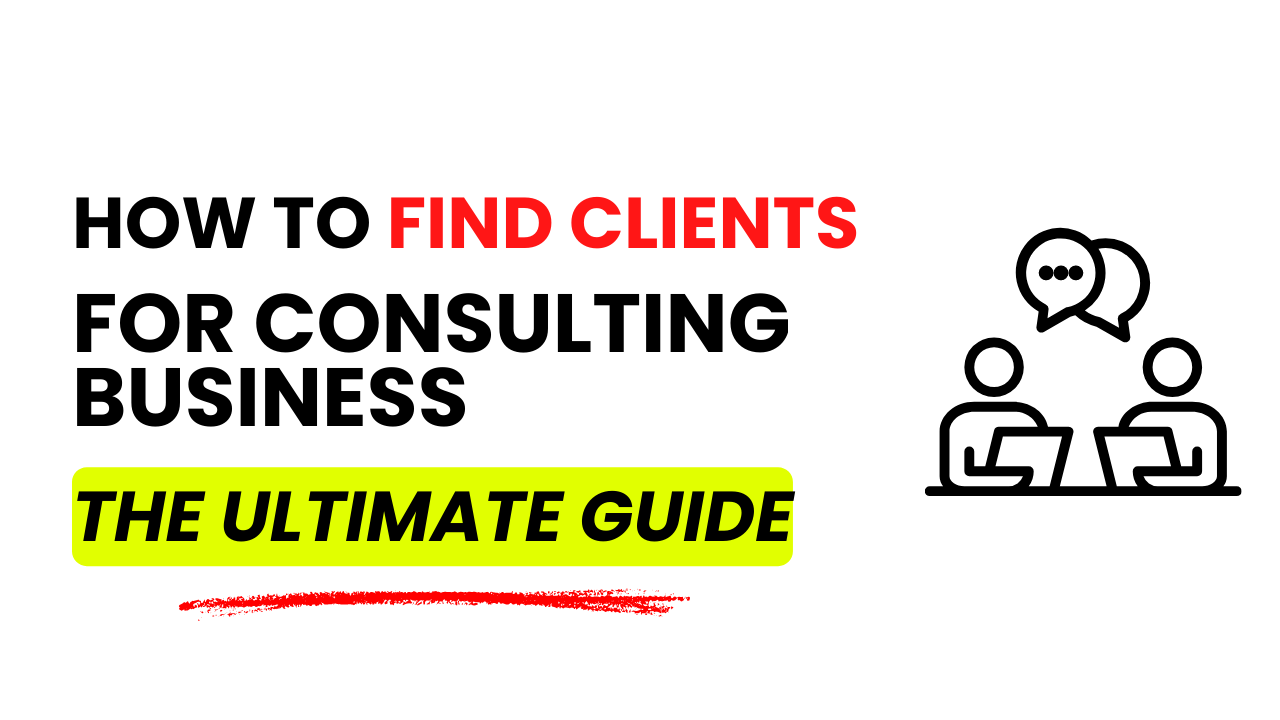Summary
In this ultimate guide to finding clients for your consulting business, we will unravel these seven expert pieces of advice, helping you to choreograph the intricate ballet of client acquisition.
So, hold tight, fasten your seatbelts and prepare for a riveting journey through the twisting, turning roadways of client acquisition.
What type of Clients need Consulting Services

The world of consulting is as diverse as it is vast, reaching into every crevice of industry and commerce.
It’s a realm where every business, from fledgling start-ups to multinational conglomerates, might need the seasoned guidance that only consultants can offer. But what kinds of clients are we talking about, precisely?
Let’s embark on a brief journey through the modern marketplace.
Picture, if you will, the newly minted startup – a team of bright-eyed innovators, awash in a sea of ideas and potential, yet unsure of how to navigate the choppy waters of the business world.
They need a lighthouse, a guiding beacon – and that beacon is you, the consultant.
Then there’s the small to midsize business (SMB).
These companies have seen some success, they’ve scaled a few hills, but they’re itching to conquer mountains.
Here’s where the experienced consultants swoop in, helping to scale their operations, enhance efficiency, or break into new markets.
Consider too, the large corporations.
These titans of industry, though seemingly self-sufficient, often require external perspectives to keep them on the cutting edge, to navigate through the maze of global market shifts, regulatory complexities, or even internal restructuring.
They seek the services of consultants to provide an outside-in perspective, to challenge their norms and introduce innovation.
Lastly, don’t forget the non-profit organizations and governmental agencies. With unique challenges, often working with limited resources or tight budgets, they require consultants to enhance their operations, strategize their initiatives, or increase their impact.
To distil it down, any organization that seeks growth, change, improvement, or problem-solving may well need a consultant.
The stage is grand, and the players are diverse. So, put on your dancing shoes, because this ballet is about to begin.
How to Find Clients for Consulting Business – Establish the Foundations

Before the curtains rise, before the spotlight hits the stage, and before the dancers make their first graceful steps, there’s a world of preparation that takes place behind the scenes.
This is your preparation phase – your time to lay down the groundwork, to set your stage, to prepare for the ballet of customer acquisition.
Think of it as preparing for a journey – you wouldn’t set sail without a map, provisions, and a sturdy ship, would you?
Similarly, in your quest to find clients for your consulting business, you must start by fortifying your foundations, fine-tuning your assets, and aligning your strategies.
This phase, often overlooked, can be the difference between a seamless ballet and a clumsy stumble.
In the coming sections, we’ll navigate through this critical phase step by step, laying down the groundwork to ensure that when you do take that stage, you’re poised, prepared, and primed to dazzle
Hit the Ground Running with Your ICP

Picture your ideal customers.
Really, take a moment.
Imagine their business, their industry, their challenges, their ambitions. Who are they?
Now, put a frame around this picture.
This is your Ideal Customer Profile (ICP).
Your ICP is a representation of the customers you’re most suited to serve that would get the most value from your product or service and that would also provide significant value to your company.
Start by sketching out the attributes of these ideal customers – their size, industry, the challenges they face, the goals they aspire to, and the decision-makers within their hierarchy.
The more detailed your ICP, the better you can align your efforts to attract, engage and delight them.
Creating your ICP isn’t just about listing out attributes, though.
It’s about immersing yourself in their world, understanding their pain points, their desires, their decision-making processes.
Only then can you truly tailor your approach to resonate with them, to speak their language, to dance to their rhythm.
Building a solid ICP is like laying the cornerstone of a house. It’s the foundation upon which you’ll build your marketing strategies, your content, and your outreach efforts.
Get this right, and the rest of the ballet becomes a symphony of synchronized steps.
Compose your Unique Value Proposition
In the bustling marketplace of the consulting world, standing out from the crowd is no mere suggestion – it’s imperative.
To do this, you need a compelling Unique Value Proposition (UVP).
Like a solo dancer in a crowded ensemble, your UVP distinguishes you from the competition and captures the audience’s attention – in this case, your potential clients.
Your UVP is your promise to your clients, the encapsulation of what you bring to the table, and why they should choose you.
It’s your battle cry, your mission statement, your headline act.
It succinctly outlines the benefits you offer, the problems you solve, and how you do things differently from others in the consulting arena.
To craft a compelling UVP, first, consider your strengths and specialties.
Are you a seasoned marketing strategist in the technology sector? An efficiency expert for manufacturing industries? Or perhaps a sustainability consultant for businesses going green?
Take stock of your expertise, your experience, your victories, and your skills.
Next, align these strengths with the needs, challenges, and goals of your Ideal Customer Profile.
How do your strengths solve their problems?
How do your services align with their goals?
This alignment forms the core of your UVP.
Finally, think about what makes you different.
Is it your innovative approach, your comprehensive methodology, your impressive network, or your years of industry-specific experience?
Whatever it is, highlight it.
Your UVP is more than a statement – it’s a commitment, a declaration, and a testament to what you stand for in the crowded marketplace.
So, make it clear, make it compelling, and most importantly, make it uniquely yours.
Here’s one amazing UVP example – Uber:

Source: WordStream
UVP is something most consultants overlook and it’s costing them a lot more than they realize.
Don’t be one of them.
Fine-Tune Your Portfolio
Every dancer knows the value of a well-executed pirouette, a perfectly timed leap, or a graceful arabesque.
These movements tell a story, reveal character, command attention.
Similarly, in the grand ballet of client acquisition, your portfolio is your show-stopping performance, your prima ballerina.
It’s your chance to showcase your skills, strut your successes, and, ultimately, win your audience’s – your potential customers’ – applause.
Think of your portfolio as a curated collection of your best work, your most impressive engagements, your most striking successes. It’s a tangible testament to your experience, your abilities, and the results you deliver.
So, what makes a portfolio shine?
Three things: relevance, results, and a narrative.
First, ensure your portfolio is relevant to your Ideal Customer Profile.
Highlight the projects that align with their industry, their challenges, and their goals.
Show them that you understand their world and can deliver the results they seek.
Second, showcase results.
Numbers speak louder than words in the business world.
Did you boost a client’s revenue by 20%? Help cut operational costs by half? Did you streamline a process, saving your client several man-hours each week?
Quantify your successes, and let the numbers do the talking.
Lastly, weave a narrative around each case study in your portfolio.
Describe the challenge, your approach, and the end result.
A well-told story not only showcases your problem-solving abilities but also highlights your journey and your process, giving potential customers a glimpse into how you work.
Remember, your portfolio is more than a record of your past work – it’s a preview of what you’re capable of. It’s your moment under the spotlight, your time to shine. So, ensure it’s polished to perfection.
With your portfolio now gleaming and ready, let’s prepare the stage—your website.
Assemble Your Website
In the age of digital connectivity, your website is your stage, your platform, your arena.
It’s where your potential customers get their first impression of you and where they decide if you’re worth their time.
Hence, building your site isn’t just a step in your preparation phase; it’s a vital pillar of your entire consulting business.
To construct a website that not only attracts but also retains and converts visitors, focus on these key elements: design, content, functionality, and SEO.
Let’s start with design.
Like the opening scene of a ballet, the design of your website must be visually compelling, drawing your audience in from the get-go.
It should reflect your brand, be easy on the eyes, and, most importantly, be user-friendly.
Here’s a great example of this in action:

Source: N.Rich
Next comes content.
Remember your Unique Value Proposition and your Ideal Customer Profile?
Here’s where they take center stage.
Your website content should clearly communicate your UVP, resonate with your ICP, and showcase your portfolio. It should tell your story, highlight your expertise, and demonstrate your value.
Functionality is where design and content come together.
Your site must be easy to navigate, with a logical layout, clear calls to action, and responsive design for all devices.
Speed is critical too—nothing sends potential customers clicking away faster than a slow-loading website.
Finally, don’t forget about SEO.
To draw in the right audience, your website needs to be found by search engines.
Incorporate keywords that your ICP might use when looking for consulting services, create valuable content to attract organic traffic, and employ good SEO practices to improve your ranking.
Building your website might feel like a monumental task, but consider it your first performance in the client acquisition ballet. Make it count. Make it impressive.
With your site up and running, it’s time to spread your wings and let your brand voice echo in the virtual halls of social media.
Set up your Social Media
In the grand theatre of modern business and marketing, social media platforms are the bustling lobbies, the whispering galleries, the vibrant poster boards.
They are spaces where conversations happen, connections are made, and clients are won.
Setting up your social media presence is, therefore, a critical step in your preparation phase.
So how do go about doing it?
Well, instead of writing what everyone else writes let us tell you this: Social media is more than just posts, likes, and shares.
It’s a platform for engagement, a vehicle for value, a conduit for your brand voice.
It’s where your Ideal Customer Profile hangs out, interacts, and seeks information.
Your task?
To be there, to participate, and to offer value.
Start by identifying the social media platforms your ICP frequents.
Is it LinkedIn, with its professional atmosphere? Or perhaps Twitter, with its rapid-fire updates and conversations? Maybe it’s Facebook, with its mix of personal and professional interactions.
Each platform has its unique vibe, and your presence should be tailored to match it.
Next, create a content plan.
The key here is consistency and value.
Regularly share helpful tips, industry insights, thought leadership pieces, and snippets from your portfolio.
Your content should position you as an expert, a source of valuable information, and a thought leader in your field.
Engage with your audience.
Social media is a two-way street.
Respond to comments, answer questions, and participate in relevant discussions.
This not only keeps you on your audience’s radar but also builds relationships and fosters trust.
Finally, use social media to drive traffic to your website.
Share blog posts, case studies, and links to your offers.
Remember, your website is your stage, and social media is the spotlight guiding your audience to it.
With your social media set up, you’ve taken another significant step in your client acquisition ballet.
But the dance is far from over.
Let’s move to the next phase of our preparation: the Light CRM system.
Make Use of Light CRM from the Get-Go

Even in the grand performance of acquiring consulting clients, there’s an often overlooked yet crucial stagehand working behind the scenes – the Customer Relationship Management (CRM) system.
A CRM system helps you keep track of your leads, your customers, and your interactions with them. It stores contact information, tracks emails, logs calls, and even schedules follow-ups.
Essentially, that organizes your contacts, streamlines your processes, and, ultimately, helps you deliver a standout performance every time.
When you’re starting, you don’t need the grandest CRM system with all the bells and whistles.
A light CRM will do the trick.
It should be able to handle contact management, task reminders, and offer some level of customization.
Tools like Zoho, Hubspot, or Pipedrive offer cost-effective CRM solutions suitable for beginners.
Setting up a CRM system early on is beneficial in several ways:
– it fosters organization
– promotes productivity
– and prevents leads from falling through the cracks.
Furthermore, as your client base grows, having a CRM system in place will make scaling smoother and easier.
Having set up your CRM, we’re nearing the end of our preparation phase.
The stage is nearly set, and the performers are almost ready.
It’s time to move on to the last piece of our groundwork: Pricing Policies and Packages.
Set up Pricing Policies and Packages
In the vibrant marketplace of consulting services, your pricing policy is more than just a number on a tag.
It’s a declaration of value, a promise of quality, a statement of your brand’s worth.
Like the grand finale of a ballet performance, your pricing policy must leave an impression.
Start by understanding your costs – the tangible ones like office space, software subscriptions, and travel expenses, and intangible ones like your time, knowledge, and expertise.
Then, research the competition.
What are they charging for similar services? Where do you stand in the market spectrum?
This isn’t about matching or undercutting competition but understanding your market’s landscape.
Then, decide on your pricing strategy.
Will you charge per project, per hour, or a retainer fee for ongoing work?
Each has its merits and can be suitable for different types of clients.
Next, package your services.
Packages allow customers to quickly understand what you offer and at what price.
They also enable you to showcase the value you provide, making the pricing more appealing.
Consider offering different tiers of service, catering to different budgets and needs.
This widens your potential client pool and provides options for clients to choose from.
Remember, transparency is crucial.
Make sure your customers understand what they’re paying for. Be clear about your prices, what each package includes, and your payment terms. This sets the right expectations and builds trust.
With your pricing policies and packages in place, your preparation phase is complete. You’ve laid down the groundwork, and the stage is set.
Now, it’s time to step into the spotlight and perform.
Performing Phase – 7 ways to get more clients for Consulting Business
The curtain rises, the spotlight is on, and it’s time to perform.
You’ve prepared diligently and laid a solid foundation.
Now, it’s about bringing all the elements together and executing the right moves to draw customers.
In this act of our ballet, we will focus on seven strategies to attract clients to your consulting business.
Each of these is a dance in its own right, intricate, demanding, and ultimately rewarding.
They encompass both traditional and modern approaches, from the time-honored art of networking to the contemporary craft of digital advertising.
Remember, the goal here isn’t to master every strategy.
Instead, pick the ones that resonate with your style, suit your resources, and align with your Ideal Customer Profile.
Experiment, adjust, and perfect your performance over time.
Are you ready to take the stage and crush your 2023 growth goals?
Let’s begin.
Provide Valuable Content

Like a ballet dancer’s eloquent movements that narrate stories, as a consultant, your content is a storytelling tool.
It tells the story of your expertise, your understanding of the industry, and your ability to solve problems.
Providing valuable content is your first dance in the client acquisition ballet.
But what does valuable content look like?
It can take many forms – insightful articles, comprehensive guides, illuminating case studies, engaging podcasts, and thought-provoking webinars, to name a few.
It’s information that educates your audience, solves their problems, and ultimately showcases your consulting acumen.
To provide valuable content, start by identifying your audience’s pain points.
What are the challenges they face? What questions are they asking?
What problems do they need solutions for?
Use these insights to craft content that addresses these points.
Remember, your content should not be a sales pitch but a platform to provide value.
Share your content widely.
Publish it on your blog, promote it on your social media, send it to your subscribers.
But, also consider guest posting on industry blogs, or featuring on podcasts or webinars.
These platforms can introduce you to a wider audience and establish you as an industry thought leader.
Keep in mind, providing valuable content is an ongoing commitment.
It’s a dance that requires consistency, relevance, and creativity.
But as your audience grows, and your brand becomes synonymous with value and expertise, you’ll find customers naturally gravitating towards you.
Ask for Referrals
Word-of-mouth is an age-old marketing tactic that has survived the test of time, thriving even in the age of digitalization.
The reason for its endurance lies in its power, rooted in trust and personal relationships.
As a consultant, harnessing the power of referrals can be instrumental in growing your customer base.
Your existing customers already know the value you bring.
They’ve experienced your expertise, benefited from your advice, and seen results first-hand.
When they refer you to their network, they pass along this trust.
It’s an endorsement that can instantly cut through skepticism and help you build a connection with potential clients.
So how do you get referrals?
It’s simple: Ask for them.
This might feel a bit uncomfortable at first, but remember, if you’ve delivered value, your clients would be more than happy to help you.
You could consider setting up a referral program that offers incentives for each successful referral, like discounts on future purchases.
Furthermore, don’t limit your request for referrals to current customers.
Reach out to former customers, professional connections, and even friends and family.
The wider you cast your net, the more chances you have of catching potential customers.
Remember, each referral is a vote of confidence, a testament to your service, a personal endorsement of your value.
And that’s the kind of reputation that can’t be bought, it can only be earned.
Use PPC – Google and Meta Advertising

Stepping into the realm of Google and Meta (formerly known as Facebook) advertising is like venturing into a vibrant marketplace, teeming with potential clients.
Pay-per-click (PPC) advertising can be a strategic marketing weapon in your arsenal, enabling you to target specific demographics, streamline your message, and directly engage with your Ideal Customer Profile.
The premise is simple: you pay for each click your ad receives.
While this may seem straightforward, mastering the art of PPC requires an understanding of the platforms, their algorithms, and a clear plan.
Here’s where we delve deeper into this bustling marketplace.
The essence of Google Ads lies in keywords – these are terms or phrases that your potential clients are likely to use when seeking consulting services.
Research and selection of the right keywords are vital.
Google’s Keyword Planner can be a great starting point for this task.
Crafting a compelling ad is just as important.
Your ad should resonate with your potential client’s needs and concerns.
It should clearly communicate the unique value you offer and end with a call-to-action that compels the user to click.
On the other hand, Meta advertising allows you to tap into the world’s largest social network.
Its extensive user data and precise targeting capabilities make it an effective platform for reaching out to potential clients.
Your ads can be fine-tuned based on age, location, interests, job titles, and more.
This level of specificity can dramatically enhance your marketing reach and conversion rate.
Another advantage of Meta advertising is the range of ad formats available.
From standard image or text ads to video ads, carousel ads, and more, you have a host of options to engage with your audience.
Remember, while the potential of PPC advertising is immense, it requires regular monitoring, experimentation, and optimization to get the best results.
It’s not a set-it-and-forget-it type of thing, but rather a dynamic, interactive marketing tool.
Leveraging Google and Meta PPC advertising effectively can propel your consulting business to new heights, bringing you into the direct line of sight of potential clients, magnifying your reach in the digital marketplace, and drastically improving your marketing results.
Don’t forget Email Lists and Newsletter
In the symphony of client acquisition tactics, email marketing often plays the quiet, understated notes.
But while it may lack the glamour of social media campaigns or the immediacy of PPC advertising, email marketing offers something uniquely powerful: sustained, personal engagement.
Building a list and sending out regular newsletters allows you to maintain a direct line of communication with your audience.
It’s a chance to share your knowledge, showcase your expertise, and foster a relationship built on trust and value.
The first step to effective email marketing is growing your email list.
This can be achieved through various means – offering valuable content in exchange for email addresses (like a free eBook or a white paper), running online webinars or workshops, or simply having a sign-up form on your website.
Crafting a captivating newsletter is an art in itself.
It’s not about sending a sales pitch but about providing value.
Whether it’s industry insights, actionable tips, or thought-provoking articles, your content should leave readers feeling enriched, intrigued, and eager for more.
At the same time, don’t shy away from promoting your services subtly within these emails.
Remember, it’s about striking a balance between providing value and promoting your offering.
An effective email marketing strategy also demands regularity and consistency.
Regular touchpoints keep you on the radar of potential clients, gently reminding them of your presence without being intrusive as some other marketing initiatives.
The magic of email marketing lies in its ability to create personal connections.
It’s a chance to transform your consulting business from an abstract entity into a familiar, trusted presence in the lives of your potential clients.
So, nurture this connection, let it grow, and watch as it blooms into fruitful customer relationships.
Build Connections
The consulting business is as much about people as it is about expertise.
It’s about relationships, about trust, about connections.
That’s where networking shines.
It’s a strategy that’s as old as commerce itself, and it’s as crucial today in 2023 as it ever was.
Networking is all about building and nurturing professional relationships.
It’s about meeting like-minded individuals, sharing ideas, learning from others, and helping each other grow.
And, of course, it’s about spreading the word about your consulting services.
You can network in various ways:
- Attend industry conferences, seminars, and meetups.
- Participate in professional groups and forums for consultants, both online and offline.
- Get involved in your local business community.
Don’t forget about social media platforms, like Twitter, where you can connect with professionals from all over the world.
When you network, remember: it’s not a one-way street.
It’s not just about what you can get, but also about what you can give and how can you help.
Offer advice, share your knowledge, help others solve problems.
The more value you provide, the stronger your relationships will become, and the more likely others will want to help you in return.
Networking might not bring you customers directly or immediately.
But it will put you on the radar of many potential ones.
It will boost your reputation in your industry, making people more likely to recommend you or think of you when they need consulting services.
And most importantly, it will enrich you as a professional and as a person, giving you insights and experiences that you wouldn’t get otherwise.
The power of networking lies in its ability to create a ripple effect.
A connection today could lead to a referral tomorrow, which could bring a client the next day.
It’s an investment in your business’s future, a seed you plant today that could bear fruit for many years to come.
LinkedIn – Combine Organic Growth with Paid Advertising
In the digital age, LinkedIn has emerged as the virtual hub for professionals across the globe.
It’s more than a social media platform – it’s a vibrant community where ideas are exchanged, opportunities are discovered, and relationships are built.
If your consulting business isn’t leveraging it, you’re missing out on a wealth of potential clients.
Check these stats:

Source: Sprout Social
Here’s how to leverage LinkedIn in 2023:
Firstly, focus on your personal profile.
As a consultant, you’re the face of your business, and your profile is your digital business card.
Ensure your profile is complete and professional, reflecting your expertise and experience.
Use a professional headshot, craft a compelling headline, and make your summary your story, showcasing your unique value proposition.
Regularly share content that resonates with your Ideal Customer Profile.
This could be insights from your industry, highlights from your recent projects, or thoughtful reflections on trends and developments.
Engage with comments, answer queries, and partake in relevant discussions.
This not only increases your visibility but also positions you as a knowledgeable and engaged professional in your field.
LinkedIn Groups can be a valuable networking tool.
Join groups that align with your area of expertise and your ICP’s interests.
Participate in discussions, offer valuable insights, and foster connections with other members.
Now, let’s delve into LinkedIn’s paid features.
LinkedIn Ads offer a highly targeted way to reach potential clients.
You can narrow down your audience based on industry, job title, company size, and more.
While more expensive than other social media advertising, the precise targeting can make it worth your while.
LinkedIn Sales Navigator is another powerful tool for finding and reaching out to potential clients.
It allows you to save leads, get lead recommendations, and even send InMail to people outside of your network.
Remember, LinkedIn isn’t just a platform – it’s a tool.
Use it wisely, and it can open doors to countless potential clients for your consulting business.
So, step up your game, and watch as your connections turn into opportunities, and your opportunities turn into customers.
Go on Podcasts!
Podcasts are an increasingly popular medium, providing a unique platform to share insights, tell stories, and engage with a captive audience.
Being a guest on a podcast related to your consulting field can be an effective way to raise your profile, demonstrate your expertise, and reach potential customers.
To begin your podcast journey, identify podcasts that align with your industry and your ICP.
Listen to a few episodes to get a feel for the style and content.
If you believe your knowledge and experiences could provide value to the listeners, reach out to the host.
Propose a few topics you could speak on, and explain why you believe you’d be a good fit for the show.
When you’re on the show, focus on delivering value.
Share insights, tell interesting stories, and offer actionable advice.
Remember, this isn’t a sales pitch.
It’s a chance to showcase your expertise and thought leadership.
The goal is to leave listeners thinking, “I learned something valuable from this person.”
Podcasts also offer an opportunity to connect with listeners beyond the show.
Promote your episode on your social media channels, invite listeners to connect with you on LinkedIn or sign up for your newsletter, and consider offering a special promotion or a piece of exclusive content as a thank-you for listening.
Being a podcast guest allows you to leverage someone else’s platform to reach a wider audience, positioning yourself as a knowledgeable, engaging expert.
And in the grand journey of client acquisition, that’s a powerful step forward.
Extra tip: Send Personalized Proposals!
In the world of consulting, personalized proposals are your secret weapon.
They’re your opportunity to stand out from the rest of the consultants, demonstrate your understanding of the client’s needs, and showcase how your services can provide the solution they’re seeking.
Each proposal should be tailored to the client, their needs, and their business.
You should clearly demonstrate that you’ve taken the time to understand their challenges and goals.
Show them you’re not offering a generic service like the majority of consultants out there, but a customized solution.
Remember, the goal of a proposal is to win the client’s trust and convince them that you’re the right consultant for the job.
So, put effort into it, tailor it, and make it shine.
Sending personalized proposals is a labor-intensive process, but the rewards are worth it.
It demonstrates your dedication, professionalism, and attention to detail, making you stick out in an ocean of consultants.
Let’s not forget the fact that you can only send proposals to customers who are interested in your services.
This is where lead scoring comes in, helping you identify those high-quality prospects.
But, what is lead scoring, and how does it work? Let’s find out in the next section.
Lead Scoring
In the sea of prospective clients, not all are created equal.
Some are just dipping their toes in the water, some are ready to take the plunge, and some are on the lookout for a lifeline.
As a consultant, your time is precious.
Therefore, focusing your efforts on those who are most likely to become clients is a smart move.
This is where lead scoring comes in.
Lead scoring is a methodology used to rank prospects according to their perceived value to your business.
It helps identify those prospects who are most likely to convert into customers, enabling you to prioritize your outreach and follow-up efforts.
This scoring is based on various factors, including:
Behavioral data: This includes actions the leads have taken, such as downloading content, subscribing to your newsletter, or spending time on your website. The more engaged the lead, the higher their score.
Demographic information: This can include elements like the lead’s industry, job title, and company size. If a lead’s demographics align well with your Ideal Customer Profile, their score should be higher.
BANT criteria: This stands for Budget, Authority, Need, and Timeline. If a lead has the budget for your solution, the authority to make decisions, a need for your expertise, and a suitable timeline, they’re likely to be a high-quality prospect.
By scoring your leads, you can ensure that you’re not wasting your valuable time on unlikely prospects.
Instead, you’re focusing on those who are already showing signs of interest and are a good fit for your offer.
Lead scoring isn’t an exact science, and it will require some fine-tuning.
But once you get the hang of it, it can be an incredibly powerful tool in your client acquisition arsenal.
With your leads scored and your high-value prospects identified, the next step is to measure the success of your strategies and explore new ones.
Let’s delve into that next.
Measurement of Success and Testing New Theory
In the voyage of client acquisition, measurement is your compass and your map.
It tells you if you’re moving in the right direction and how far you’ve come.
It also signals when it’s time to adjust your course or try a new path.
There are various metrics you could track to measure your success. Some of the most critical ones are:
Lead conversion rate: This measures the percentage of leads that convert into clients. It’s a clear indicator of how well your methods are working.
Customer Acquisition Cost (CAC): This is the total cost of acquiring a new client, including marketing expenses, time spent, and any other related costs.
The lower your CAC, the more efficient your client acquisition process.
Customer Lifetime Value (CLV): This is the total revenue you expect from a client over the entire duration of their relationship with you.
If your CLV is significantly higher than your CAC, you’re on the right track.
Retention rate: This measures the percentage of customers who stay with you over a given period.
High retention rates indicate client satisfaction and loyalty.
Tracking these metrics will give you a clear picture of your performance.
If something isn’t working as expected, it’s time to experiment with new approaches.
And that’s the beauty of client acquisition. It’s not a rigid, one-size-fits-all process.
It’s fluid, dynamic, and ripe for experimentation.
Don’t be afraid to test new theories, try different approaches, and push your boundaries.
That’s how you grow, learn, and ultimately succeed.
With your metrics tracked, your success measured, and new theories ready to be tested, the final step is to close deals faster and find high-quality prospects.
Let’s explore how ZeroIn can assist with that.
Find High Quality Prospect and Close Deals Faster with ZeroIn!
In the quest for clients, ZeroIn can be your trusted steed – a cutting-edge email discovery platform designed to streamline and simplify your prospecting endeavors.
Equipped with an easy-to-use CRM for organizing and managing vital prospect data, ZeroIn supercharges your prospecting, pushing it to the next level.
ZeroIn’s magic lies in its vast capabilities that go beyond merely providing contact information.
It offers over 20 additional insights about your prospects and their organizations.
Seamlessly integrated with LinkedIn Free or Sales Navigator searches, ZeroIn’s browser extension utilizes your search criteria to tap into its vast database, presenting an all-encompassing view of your potential clients.
With up to 26 unique data points and a rigorous 10-step verification process, ZeroIn guarantees accuracy and authenticity for every email address you encounter.
This level of precision means you can trust the data you’re using, saving you time and resources on prospecting.
ZeroIn’s flexibility ensures ease in importing, re-verifying, and exporting leads in various formats, making it an indispensable tool for your outreach campaigns.
Moreover, its duplicate finder feature ensures your CRM data remains accurate and up-to-date, further saving you time and resources.
Ideal for small and medium-sized businesses seeking affordable and efficient email discovery and management solutions, ZeroIn offers a lifetime, one-time payment deal.
With ZeroIn as your trusted ally, you can connect with the right people faster and more efficiently.
You can boost your prospecting capabilities, and ultimately propel your business growth to new heights. In the grand dance of client acquisition, ZeroIn can be the partner that makes you shine.
Companies that use ZeroIn:
Contact us/Book a Demo/ Get 25 free Credits/ Create a Free Account and Get 25 credits!
